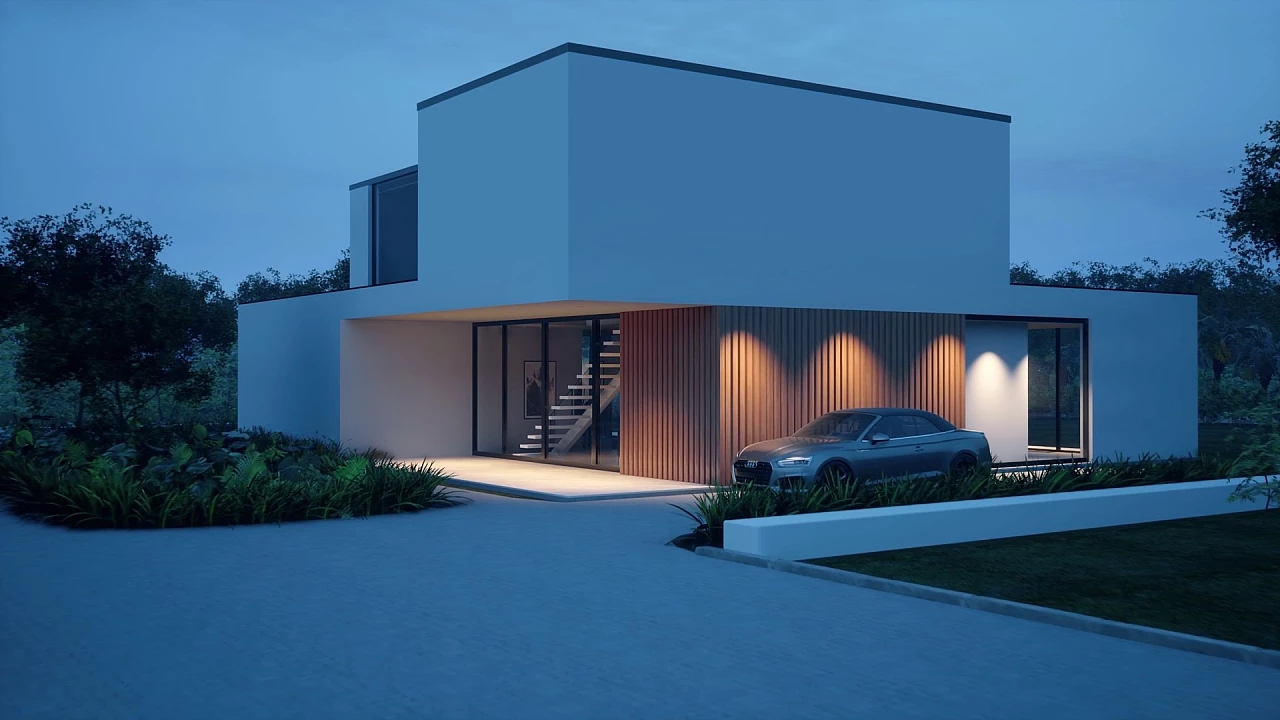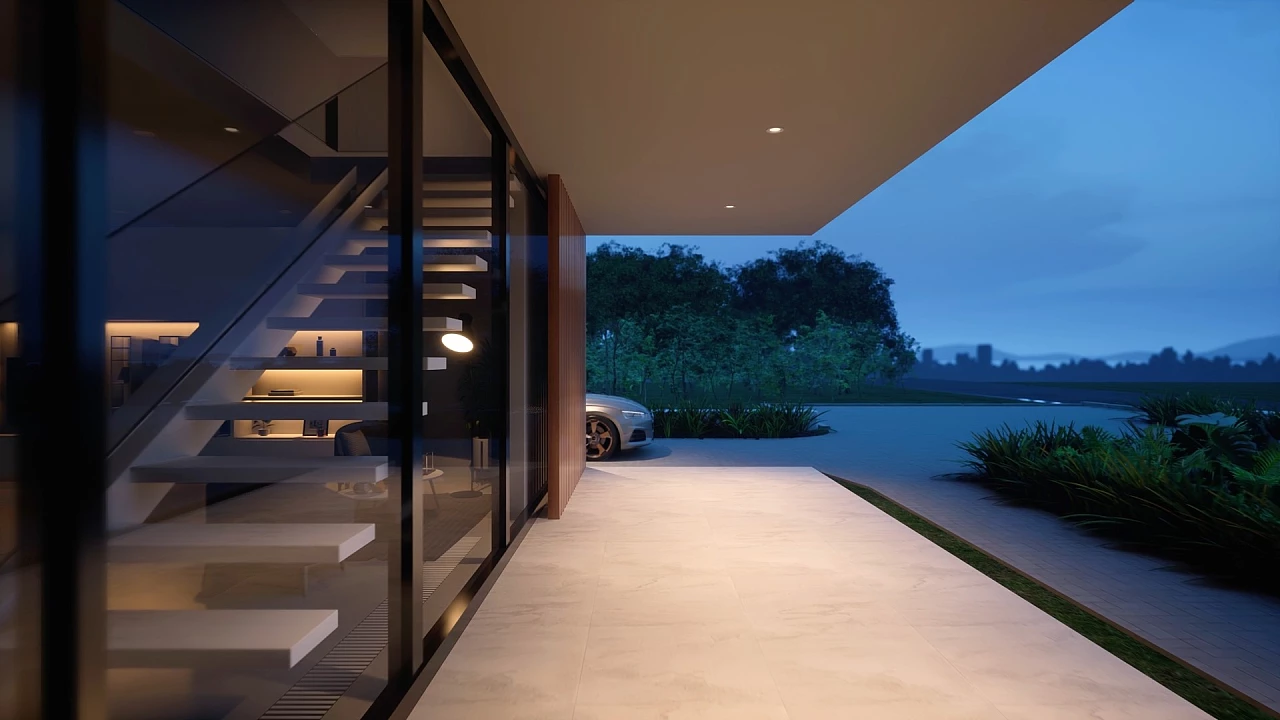Compared with sweeping robots and smart speakers, smart lighting is an “emerging industry” in the field of smart life. Smart lighting is now at the intersection of the introduction period and the growth period, and the market still needs to be cultivated. However, lighting manufacturers are convinced that as smart lighting products are gradually accepted by the market. As consumers gradually develop usage habits, their spending power is bound to be huge, and the industry’s “money scene” is bound to be very bright.
In order to give consumers a better experience, many lighting manufacturers have set up experience halls during their production or sales, so that consumers can more intuitively feel the convenience brought by smart lighting to life.
The technical core of smart lighting products is the smart lighting system, which accounts for about 90% of the market, while lamps and related accessories account for about 10%. Smart lighting opens up the industry’s long-term growth space. LED smart lighting will increase the ASP and added value of products, and its development space is much larger than that of traditional lighting products, and the source of long-term growth momentum after the rapid replacement period can be solved.
With the growing demand of consumers in the smart home market, smart lighting, as one of the entry points for smart homes, is also popular among lighting companies and smart control companies.
At present, the intelligent control of lighting has become the general trend, which brings huge development space to the entire industry. Investment can focus on the smart home market with home lighting as an important content, which will be an important development area for the industry in the future. In the future, home smart lighting and urban smart lighting will be the main growth points for the development of the smart lighting industry. The combination of traditional lighting and smart lighting will also have a good development trend, which is the main investment direction of the industry.
In the era of “Internet of Everything”, the direction of intelligent development has become an unavoidable problem for every lighting company. The foreign intelligent lighting industry has begun to emerge, and domestic lighting brand enterprises have also tried various intelligent products with pragmatic and innovative thinking.
Emerging means represented by intelligence have become a new profit growth point for various industries to compete. The broad business opportunities and development prospects of the smart lighting market are being practiced and recognized by the industry.
Although before 2014, the smart lighting industry appeared “big thunder and little rain” in terms of products and scale, mainly because the domestic smart lighting industry has not yet formed a certain scale, the market acceptance is low, and the smart lighting technology is immature. Since 2017, the “tepid” situation of the smart lighting market has no longer reappeared, and the smart lighting standing in the wind has become even more “infinite money”.
The continuous upgrading of LED technology has gradually expanded the market size of the smart lighting industry. Both LED lighting companies and distributors have tasted the “sweetness” of the growth of the emerging LED lighting industry in the past few years. At the same time, the rise of the LED industry with electronic properties has also enhanced the relevance of electrical industries such as switches, and the development of the electrical industry has also benefited.
However, because the entry threshold of the LED lighting electrical industry is relatively low, more and more people pour into the LED lighting industry and hope to get a share of the pie. The LED lighting electrical industry has also gradually transitioned from the “era of huge profits” in the past to the “era of small profits” , and even a “dismal market” situation appeared for a time. In a survey of most first-tier cities in the country, it was learned that LED lighting product distributors lamented that it is “difficult to do business”.
In this context, in which areas should LED lighting electrical industry distributors break through the development dilemma? Who will be the “savior” of the smart lighting industry?
The word “smart” once became a hotly discussed vocabulary in the LED lighting electrical industry.
Many LED lighting and electrical companies have been “testing the water” in the field of intelligence, and dealers have also begun to pay attention to “smart products” and their market demand, profitability, etc.
The majority of LED lighting manufacturers seem to “smell” the beautiful “money” scene in the field of smart lighting (home). Although LED lighting electrician companies have made great efforts to explore and try, but the smart lighting (home) companies with outstanding performance have not appeared, and the popularity of the smart lighting (home) market is not satisfactory. But the good news is that in 2018, the situation has changed, and people can see that smart lighting has become a trend.
From the definition of “smart lighting”, everything related to intelligent lighting is within the scope of intelligent lighting. So, what does smart lighting include?
One: dimmer
The dimmer can be regarded as a kind of “electrical product”, and the switch also belongs to a classification of the dimmer, namely: switch classification. But Lutron, the leader in the lighting control industry, relies on dimmers. The most used switch is actually the on and off of lamps. Therefore, the volume of dimmers, switches, smart scene panels, etc. can basically be counted in the category of smart lighting.
Two: LED power supply
LED power supply is a big market. Although LED power supply has little to do with intelligent lighting in a strict sense, power supply has actually become an important carrier of intelligent lighting. Is DALI power supply a smart lighting category? Obviously count. In the future, the power supply will also be intelligent. Does that count as the volume of intelligent lighting? The answer is yes.
Three: Sensors
Whether it is an independent sensor or a sensor combined with lamps, this is also a big market, and sensors are absolutely indispensable for smart lighting.
Four: lamp body
Smart color light bulbs, Bluetooth audio lights, smart desk lamps. Are these smart lighting? Doesn’t it count? Or take them apart to calculate? It seems difficult. In fact, they are all consumer smart lighting products. Now, more and more light sources are organically combined with intelligence, such as Xicato’s fourth-generation COB, Bridgelux’s Xenio, etc. Isn’t it smart lighting? ——A deeper problem has also come, more and more intelligence is also organically integrated with traditional professional lamps (non-retail).
Five: intelligent module
Smart modules used for smart lighting belong to “smart products”. Generally, companies of smart lighting systems will amortize the cost of software in hardware. Generally speaking, the development cost of software is close to the cost of hardware. Nowadays, there are more and more professional software service companies. Of course, the development of apps also requires capital investment.
With the improvement of people’s living standards, the demand for smart lighting will be the largest in the future. Because there are only one or two refrigerators and air conditioners in each family, but for lighting, downlights, spotlights, etc., each family may have dozens to hundreds of lamps.




